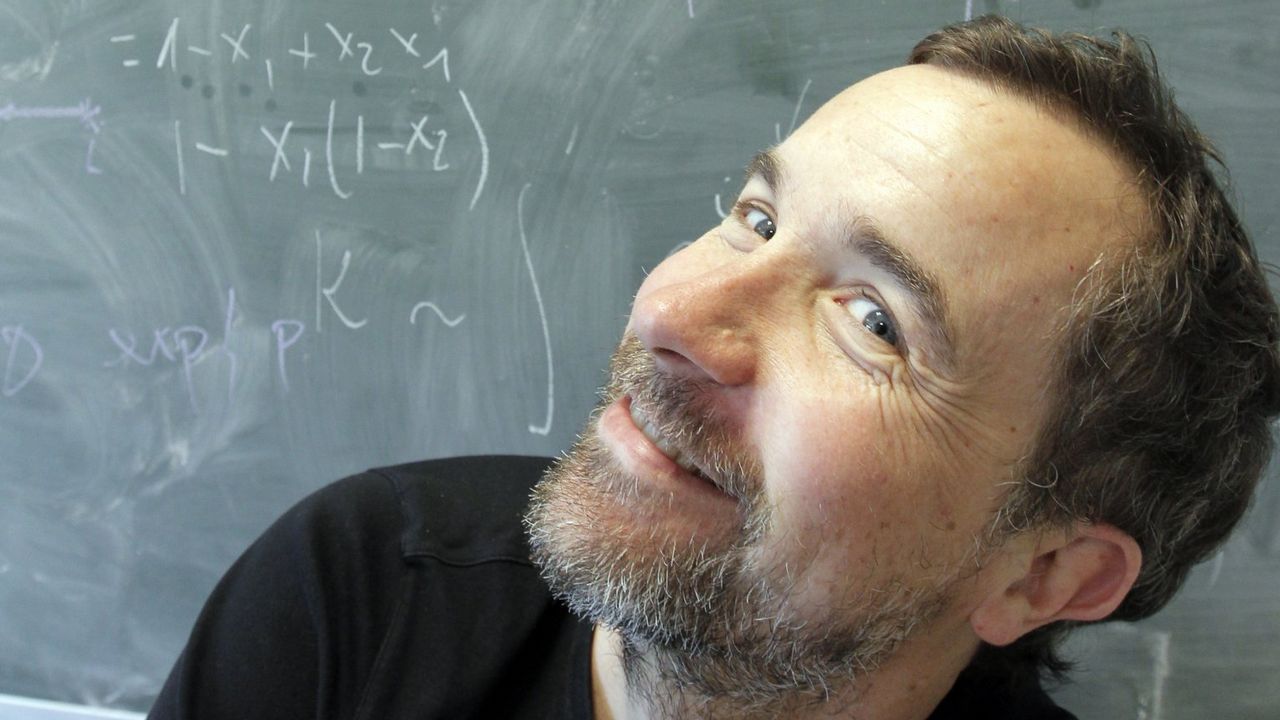EUROPE FINANCES THE RESEARCH OF A GALICIAN TO REVEAL HOW MATTER WAS CREATED JUST AFTER THE “BIG BANG”
Published in the newspaper La Voz de Galicia. March 28th 2019

Carlos Salgado, from the Galician Institute of High Energy Physics, is the second scientist working in Galicia to access the elitist Advanced Grant program
LA VOZ DE GALICIA Autor R. ROMAR March 28th 2019 Link Original Version Photo: Álvaro Ballesteros.
Think of a finger, a chair, a refrigerator, or whatever animate or inanimate object is around you. And now imagine that they could be melted at a temperature 100,000 times higher than that generated inside the Sun. You would get a kind of soup , a liquid plasma made up of quarks and gluons that constitutes the primordial material that was formed in the universe. a micro instant after the “big bang .
This simulation is currently impossible, but there is the possibility of recreating it through the collision of lead nuclei carried out in the Large Hadron Collider in Geneva (LHC). It is what has allowed us to know several of the properties of this plasma from which everything we see and know arose. But a great question remains, a mystery that continues to intrigue physicists: how it was formed. Finding out is equivalent to knowing how the cosmos was formed. And it is the question that the Galician physicist Carlos Salgado , director of the Galician Institute of High Energy Physics of the USC, will try to answer , thanks to a help from the elitist Advanced Grant program of the European Research Council (ERC), designed to finance projects on the frontier of knowledge that break down the barriers of science and aimed at excellent researchers.
In fact, Carlos Salgado is the second Galician scientist working in the community to have obtained this recognition , which means extra funding of 2.5 million euros to carry out his work. The first was José Luis Mascareñas, director of Ciqus, also from USC. Previously, Luis Liz Marzán had received him when he worked at the University of Vigo, but shortly after he was hired by the Basque Government to direct the Center for Cooperative Research in Biomaterials CIC BiomaGune in San Sebastián, where he currently works.
To understand not only how everything began, but how everything known was formed, we must go back in time. Specifically, between three and five yoctoseconds, the smallest unit of time that exists, after the “big bang.” Much less than a sigh. To put yourself in the situation, think that it takes three yoctoseconds, one billionth of a billionth of a second, to pass through a proton. Or imagine also that if a second were as large as the entire age of the universe, that time would be a million times faster than the blink of an eye. Something totally tiny, but enough, or at least that’s what it is believed, to know how matter was created in that micro instant. But for this, it is necessary to measure that time, which in itself is a huge challenge. “Or what do you have to do and calibrate it to be able to measure it”, explains Salgado.To understand not only how everything began, but how everything known was formed, we must go back in time. Specifically, between three and five yoctoseconds, the smallest unit of time that exists, after the “big bang.” Much less than a sigh. To put yourself in the situation, think that it takes three yoctoseconds, one billionth of a billionth of a second, to pass through a proton. Or imagine also that if a second were as large as the entire age of the universe, that time would be a million times faster than the blink of an eye. Something totally tiny, but enough, or at least that’s what it is believed, to know how matter was created in that micro instant. But for this, it is necessary to measure that time, which in itself is a huge challenge. “Or what do you have to do and calibrate it to be able to measure it”, explains Salgado.
It is the door to identify the physical mechanism that describes the creation of the original matter constituted from the plasma of quarks and gluons. The YoctoLHC project proposes to use in a novel way a type of probes, the jets or jets of particles produced at high energy , to make a temporal image of the first ten yoctoseconds of the collision and to understand, in this way, how the known was generated. The research will be carried out at the Galician Institute of High Energy.
